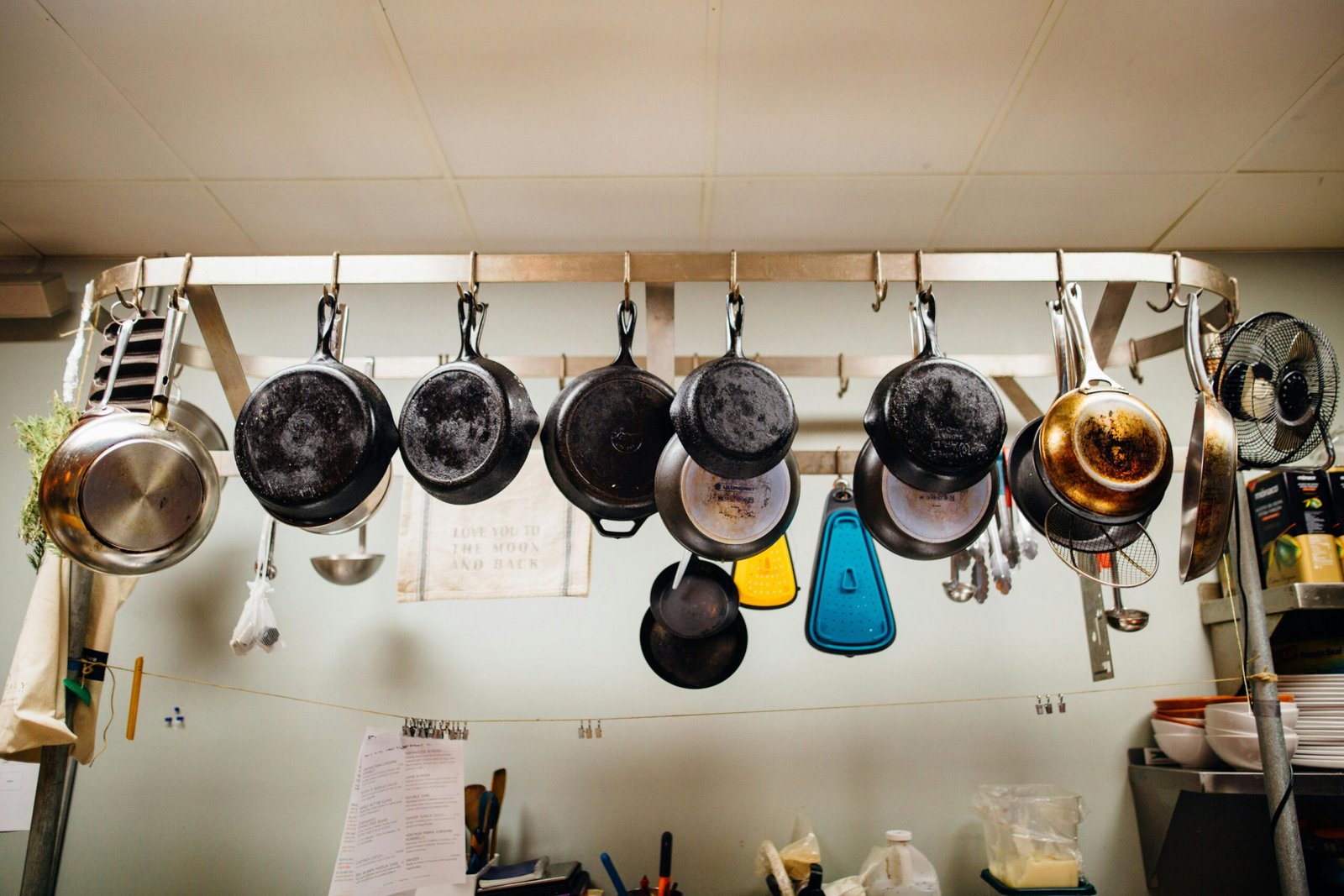When it comes to cookware, hard anodized and stainless steel are the top contenders. But which one should you choose? Let’s break down the differences so you can decide what works best for your kitchen.
What’s Hard Anodized Cookware?
Hard anodized cookware is made by treating aluminum with an electrochemical process. This turns the aluminum into a durable, smooth aluminum oxide surface. It’s a step up from regular nonstick pans and can handle a lot of heat.
- Heat Distribution: Aluminum heats up fast and evenly. Hard anodized cookware takes that to the next level. The smooth surface makes sure heat is spread out, which means no more hot spots ruining your meal.
- Nonstick Surface: The anodized layer gives this cookware a natural nonstick finish. That means you don’t need tons of oil or butter, making it easier to cook healthier meals.
- Durability: The aluminum oxide layer is tough. It resists scratches, corrosion, and wear, making it great for everyday use.
- Maintenance: You’ll need to hand wash it with gentle sponges. Scrubbers or harsh cleaners can mess up the surface, so you’ll need to treat it carefully if you want it to last.
What About Stainless Steel Cookware?
Stainless steel is tough. It resists rust, stains, and scratches, and it’s built to last. Many cooks love it because it’s low maintenance and can handle high heat.
- Heat Distribution: Stainless steel by itself doesn’t heat evenly. That’s why most stainless steel cookware has an aluminum or copper core. This helps with heat control, but it’s not as fast or even as hard anodized cookware.
- Durability: Stainless steel is nearly indestructible. It can take high heat, harsh scrubbers, and the dishwasher. But, it doesn’t have the nonstick feature of hard anodized pans, so it may require more oil when cooking.
- Maintenance: Stainless steel is pretty easy to care for. You can toss it in the dishwasher, and you can scrub away at it with metal scrubbers. It’s the hands-off option for people who don’t want to worry about delicate care.
Hard Anodized vs. Stainless Steel: The Breakdown
Let’s compare the two across three key points: heat distribution, durability, and maintenance.
Heat Distribution
- Hard Anodized Cookware: Heats up evenly and quickly. No more worrying about burning parts of your food while other parts are still cold. If you like precision cooking, this is your best bet.
- Stainless Steel Cookware: Needs an aluminum or copper core to heat evenly. It doesn’t distribute heat as well as hard anodized cookware, but it gets the job done if you’re using the right pans.
Durability
- Hard Anodized Cookware: With the right care, it can last for years. It’s twice as durable as regular aluminum, but that doesn’t mean you can throw it around. Careful maintenance is key.
- Stainless Steel Cookware: It’s nearly impossible to damage. Scratches? No problem. High heat? It can handle it. But, the nonstick feature? That’s not its thing.
Maintenance
- Hard Anodized Cookware: You’ll want to hand wash it and use gentle sponges. Don’t go near it with steel wool or harsh cleaners. If you take care of it, it’ll take care of you.
- Stainless Steel Cookware: It’s the “set it and forget it” option. Throw it in the dishwasher, use metal scrubbers, and it’ll still look great.
Quick Comparison Table: Hard Anodized vs. Stainless Steel
| Criteria | Hard Anodized | Stainless Steel |
| Heat Distribution | Even heat, no hot spots | Needs a core layer for even heat |
| Durability | Durable, but needs care | Extremely durable, but not nonstick |
| Maintenance | Hand wash with soft sponges | Dishwasher safe, metal scrubbers work fine |
Final Thoughts: Which One’s Right for You?
At the end of the day, both hard anodized and stainless steel cookware have their merits. If you want precision heat and a nonstick surface, hard anodized cookware will serve you well. On the other hand, if you prefer something easy to clean and nearly indestructible, stainless steel might be your best bet.
It’s all about how you cook. Do you want a low-maintenance option that you can toss in the dishwasher? Go for stainless steel. But if you care about even cooking and healthier meals, hard anodized is the way to go.
FAQs
Q: What’s the main difference between hard anodized and stainless steel cookware?
A: Hard anodized cookware offers even heat distribution and a nonstick surface, while stainless steel is durable and dishwasher safe but lacks a nonstick feature.
Q: Which one gives better value for the money?
A: Stainless steel usually gives better long-term value thanks to its durability. Hard anodized cookware is affordable but requires more care.
Q: How does the heat distribution compare?
A: Hard anodized cookware provides better heat distribution. Stainless steel needs extra layers like aluminum or copper to keep heat even.
Q: What are the cleaning requirements for each?
A: Hard anodized cookware needs gentle hand washing with soft sponges, while stainless steel can go in the dishwasher and withstand metal scrubbers.
Q: Which material is more durable?
A: Stainless steel is nearly indestructible and can handle just about anything. Hard anodized cookware is very durable but requires more careful handling.
Q: Is both cookware safe?
A: Yes, both are safe for cooking. Stainless steel is non-reactive, and hard anodized cookware is sealed for stability.
Q: Which one’s better for nonstick cooking?
A: Hard anodized cookware excels at nonstick cooking. Stainless steel requires oil or butter to prevent sticking.

